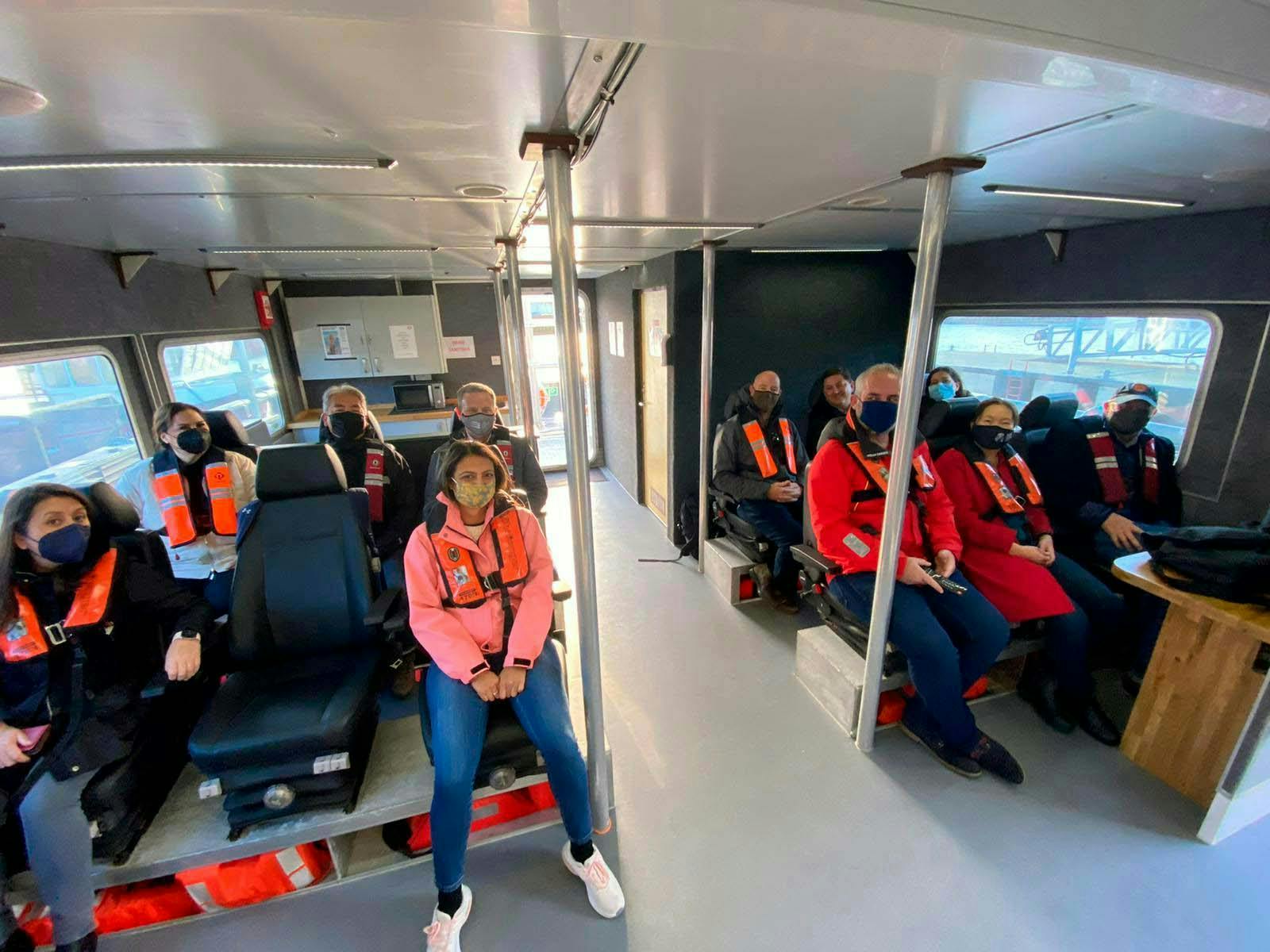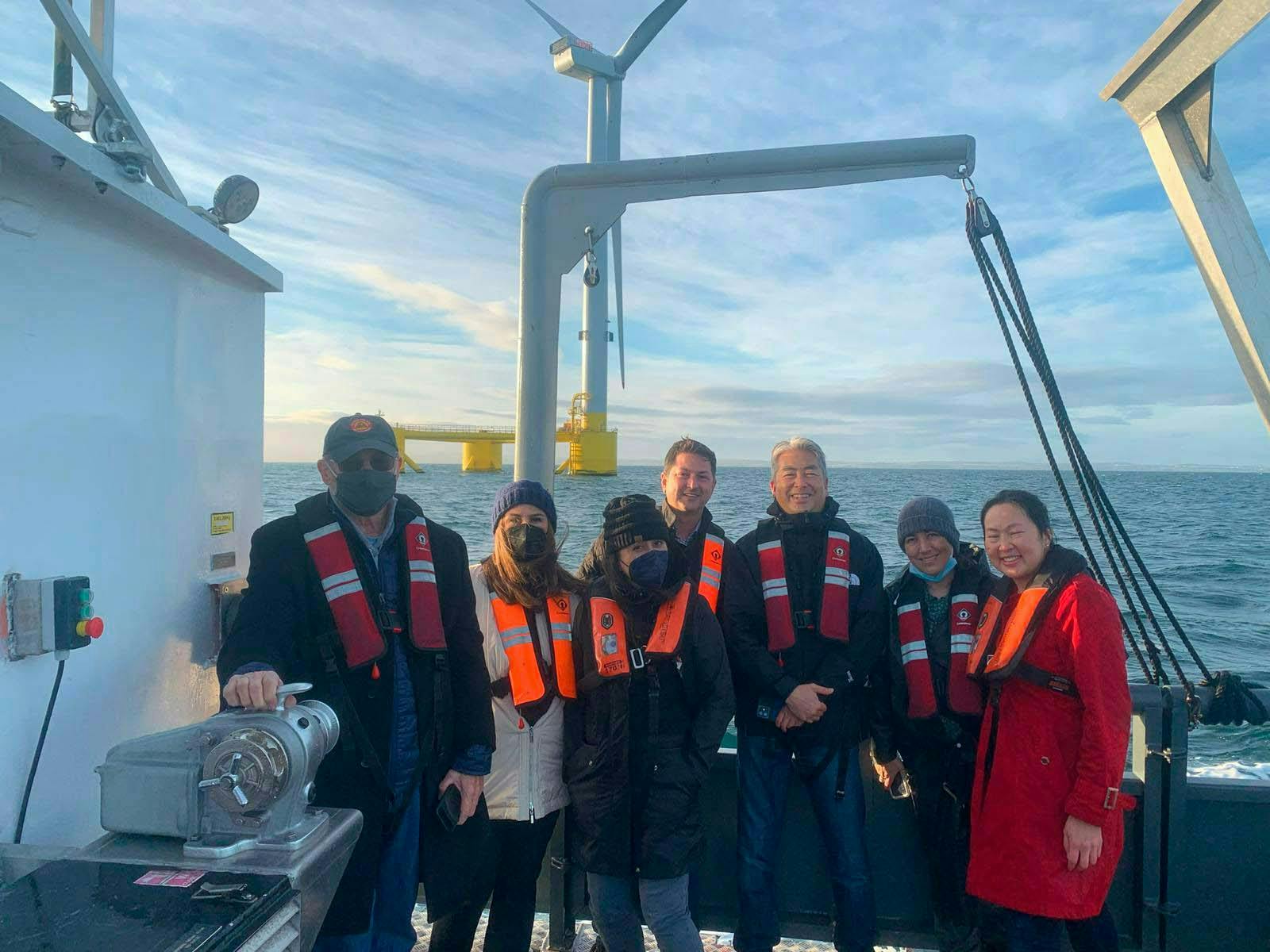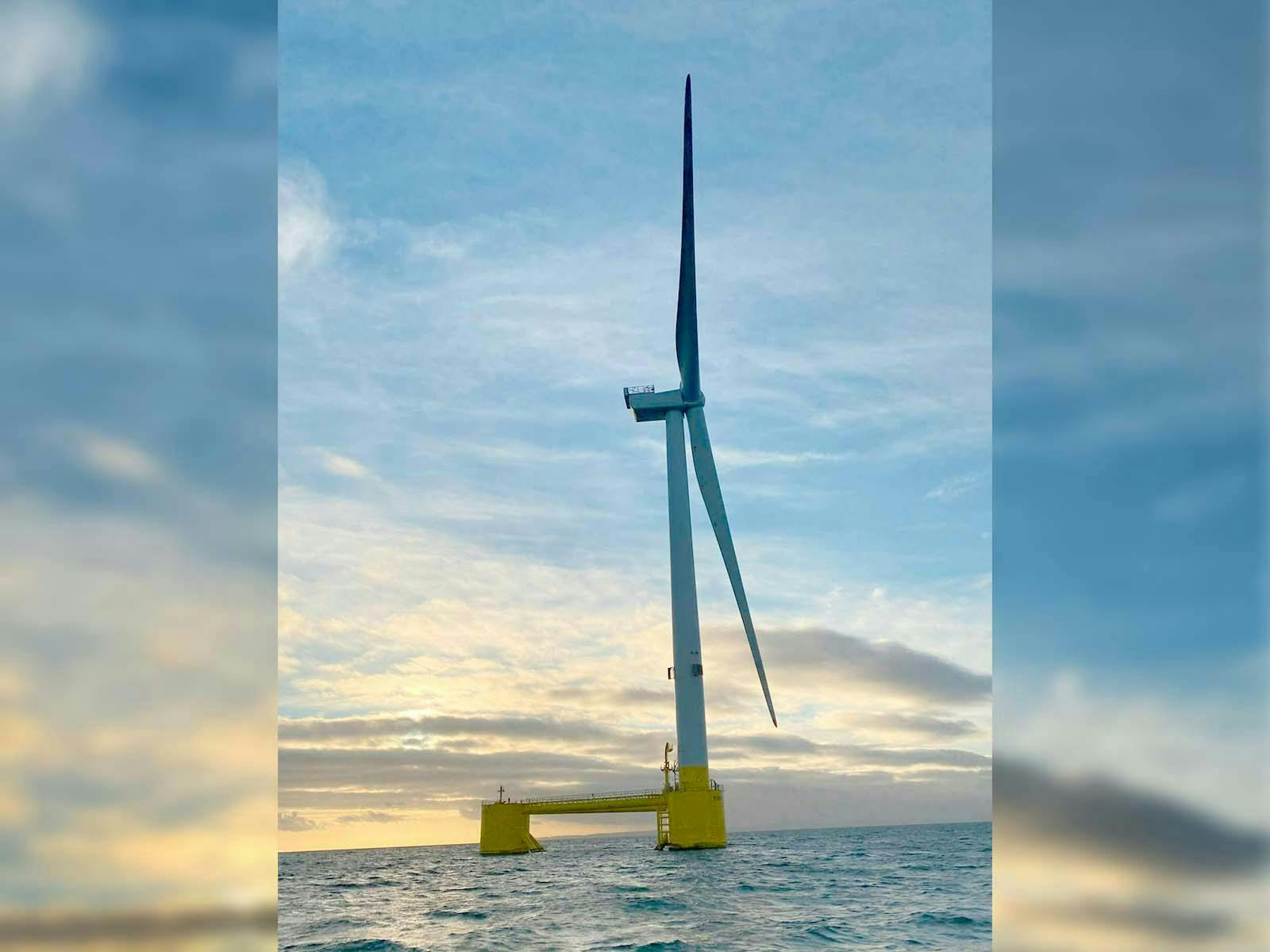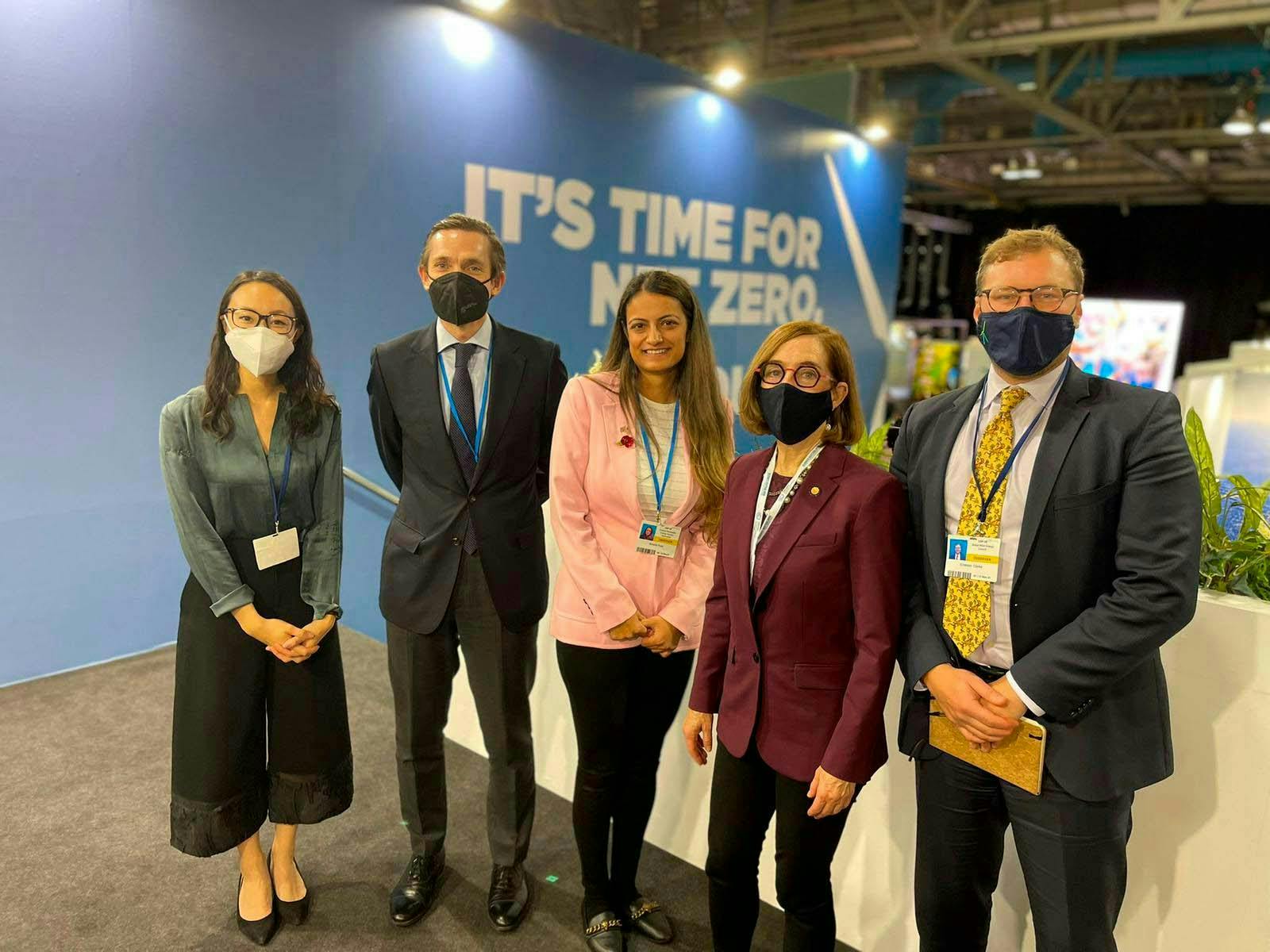Reflections from Week 2 @ COP26: Scotland, USA and FOW
by Amisha Patel, Head of Public Affairs

Last week Aaron’s round up of events and reflections summed up our hopes and optimism for the future of floating offshore wind in the energy transition. If you missed it, you can read it here.
Week two at COP26 took us over to Aberdeen and Glasgow with a focus on engaging stakeholders and officials from the US on the vast potential floating offshore wind technology has as a climate solution.
Being in Scotland has presented great opportunity. The nation has a very positive story to share globally about how it has successfully created thousands of jobs and reduced carbon emissions from its power sector through the use of renewables.
Scotland has fostered a strong relationship with California for some time now. This was underpinned by a joint agreement between Scottish Government and the State of California tackle climate change in April 2017. A part of this deal was to share best-practice in developing offshore wind.
So, no better way than to get our guests to see the technology in action at the Kincardine Project, with its five WindFloat® units hosting five Vestas 9.5 MW turbines. Kincardine is now the largest floating offshore windfarm in the world using our WindFloat® technology developed in California!
Over two days of visits we were pleased to welcome:
- David Hochschild, Chairman of the California Energy Commission
- Linda Escalante, Coastal Commissioner
- Asm. Calderon
- Asm. Muratsuchi
- Asm. Rivas
- Asm. Ward
- Senator Laird



What is apparent is that momentum for developing an OSW industry on the West Coast is rife. Conversations have moved from “why?” to the “how?” and “how soon?”. The winds of opinion are blowing in the direction of optimism and action.
Back to California
Now it is the time to get real, with industry and government taking the lead to work with local communities and stakeholders to make this is reality, one that brings benefit to all.
Floating offshore wind is now fully proven, and the industry stands ready to play a key role in helping California achieve its SB-100 goals. As I have quoted several times already, floating offshore wind has the potential to unlock a tremendous amount of economic development. Research from the Schwarzenegger Institute for State and Global Policy estimates the creation of 200.000 job-years of employment and 4.000 jobs per year to operate 10 GW of offshore wind capacity by 2040.
In addition, the clean energy generated by responsibly sited projects enhances the security of energy supply, which has been a major concern especially given the annual cycle of devastation caused by climate change-induced wildfires, and can help to offset polluting sources to deliver improved environmental justice outcomes.
Offshore wind is an industry creation project and requires visionary policy and regulation to succeed. The good news is that we know how to do this: the North Sea region of Europe has over 35 GW installed capacity and is expected to grow to 500 GW by 2030.
The history of wind in California underlines the importance of good, proactive policy: many have forgotten, but California was the birthplace of wind energy! Unfortunately, the “stop and start” approach to policy impaired development, which ultimately allowed the Northern Europeans to surpass American companies in the sector and dominate the global market. 35 years later, the US still hasn’t been able to catch up.
We see ambitious targets worldwide and AB525 is an important first step for California's 5th largest economy in the world, which conveniently has nearly 900 miles of shoreline. California has a real opportunity to show leadership both on a regional and global level.
Oregon moves toward 3 GW of offshore wind
This week we also had the pleasure of welcoming Governor Kate Brown of Oregon to the GWEC COP 26 Coalition Wind Pavilion in the blue zone. Earlier this year Oregon passed legislation aimed at developing 3 GW of offshore wind by 2030. Together we discussed technology, port infrastructure, transmission, costs and the recently awarded research grant to study the environmental impact of OSW. Finding ways for offshore wind to safely coexist with our wildlife and fisheries will be critical to moving Oregon closer to a clean energy future.

Principle Power has for long had ties in Oregon. In late 2012, the US Department of Energy awarded Principle Power a grant to support the development of the WindFloat Pacific demonstration project in Oregon, as part of the Advanced Technology Demonstration Program. The 24 MW project featured 8 MW wind turbines sited in water depths averaging 450 m with the objective of advancing floating technology to unlock the enormous resource potential of the West Coast of the United States.
Unstoppable low-carbon future
All in all, it has been a great couple of weeks (for the wind sector) though it may not seem that way overall with what is currently being reported. To me it seems as though all over the world we are starting to see governments make progress in delivering on climate change ambitions. The commitment to action from the US after years of stagnation is enough to spark my optimism.
But as we have seen from the last couple of weeks there is still much to achieve. The global transition to low-carbon future is already underway and it’s unstoppable. The real issue is how quickly we will get there, not whether we will get there. That’s why it’s fantastic to see government’s that are prepared to stand up for people and nature threatened by global climate change coming to work together and take action – and, perhaps most importantly, willing to challenge and hold accountable the ones who are not!
I would like to thank the teams at GWEC and RenewableUK for making the COP26 coalition such a success!

L’atout WindFloat®
PerformancesFabricationInstallationInspection, Maintenance et RéparationConnexionCommunautés localesEnvironnementServices
Support au développement de projetsConcept et conception pre-FEEDFEED et conception détailléeSupport à l'exécution des projetsInspection, Maintenance et RéparationServices de fin de vie



